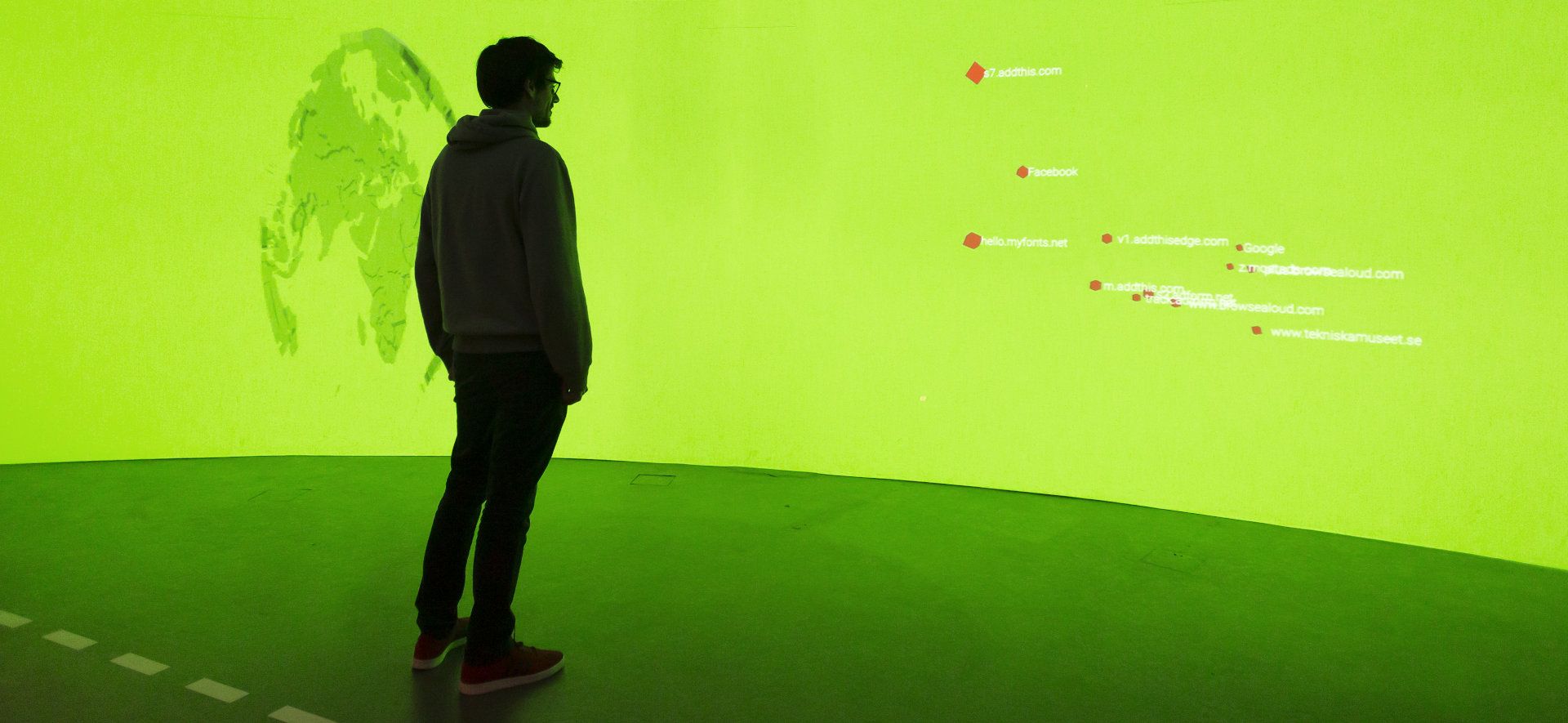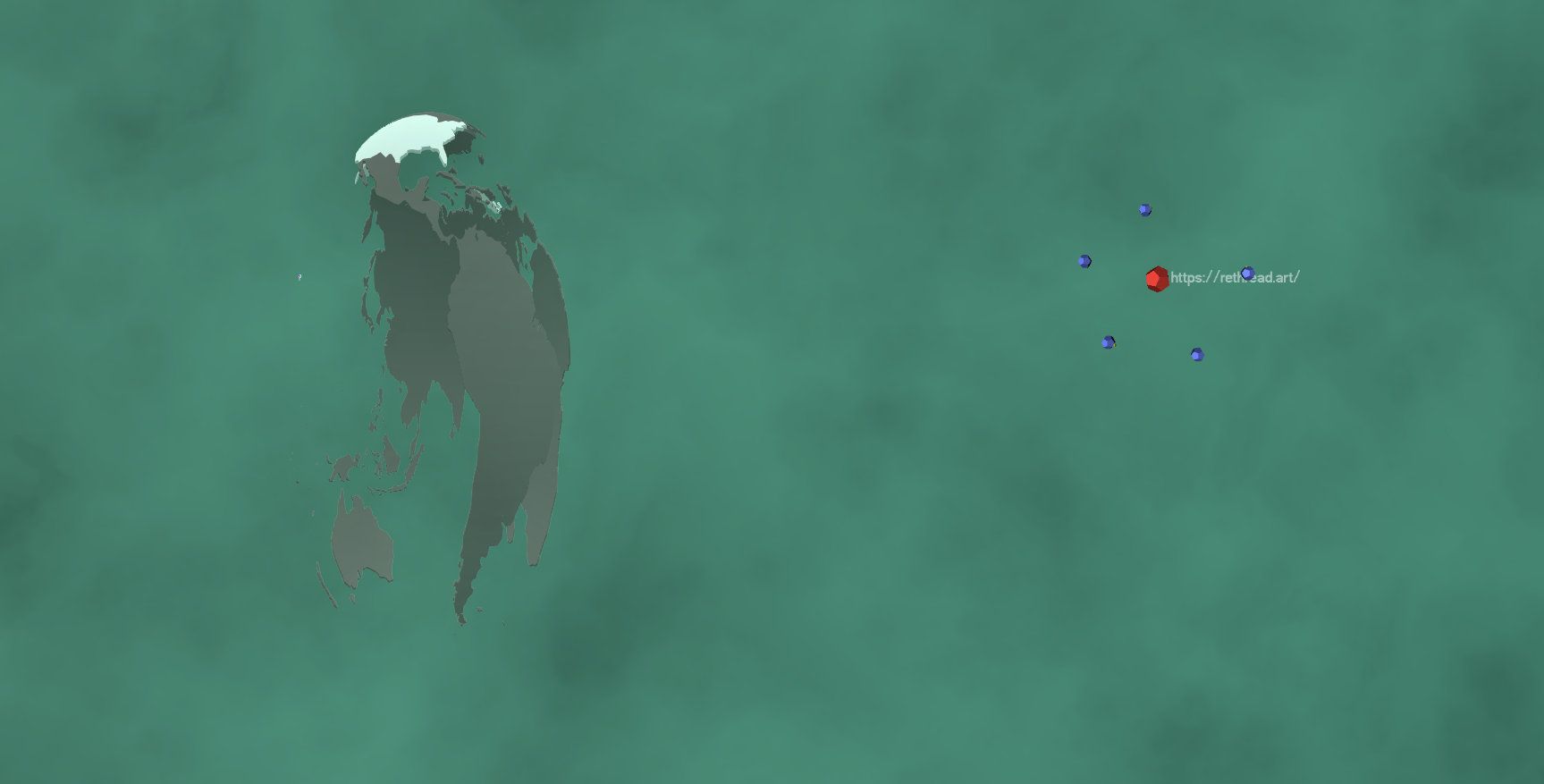 Photo: Anna Gerdén, Tekniska museet
Photo: Anna Gerdén, Tekniska museet
 Photo: Anna Gerdén, Tekniska museet
Photo: Anna Gerdén, Tekniska museet
 Photo: Anna Gerdén, Tekniska museet
Photo: Anna Gerdén, Tekniska museet
Pellow is a browser art installation that through sonification and visualisation lets you explore the web anew.
Opening on October 26 2020 at Tekniska Museet, Stockholm, Sweden
The first web browser was created 30 years ago. Today Chrome, Firefox, Edge and Safari are among the most widely used software applications. They provide citizens around the globe an access point to a stellar network of information, public services, business and knowledge.
Pellow is an interactive installation that reveals what happens under the hood of a browser when you visit web pages. When you browse a page, your browser communicates with many different pages and companies around the world. With Pellow, you see and hear the browser interacting with many other machines all over the world to fetch all of the content. You get a chance to observe where this content comes from and how many organizations and machines around the globe are solicited to deliver the web page that you want. The sonification of these intense software exchanges complements the visual representations, in order to let you fully feel the complexity of a web browser.

Every time you access a new web page, Pellow lets you see and hear all the software operations and messages that are sent and received by the browser. Pellow reveals all the machines that are accessed to deliver the web page, where they are located in the world, and how many images and multimedia items are displayed on the page.
Pellow is a software art installation designed and developed by the rethread.art collective.
The installation is named after Nicola Pellow. She is an Internet pioneer who programmed the second web browser ever created, in 1991: the Line Mode Browser.
Erik Natanael Gustafsson, Thomas Durieux, Jonathan Ramirez Mendoza, Henrik Frisk and Benoit Baudry are supported by the KTH Royal Institute of Technology, the KMH Royal College of Music, the CASTOR center for software research, the NAVET hub for science and art and the Wallenberg Autonomous Systems, Software and AI Program (WASP).
